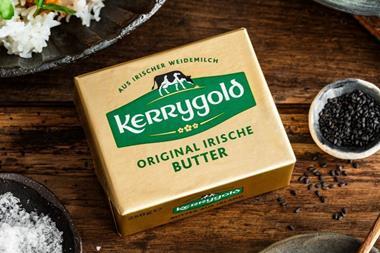M&S reported another stellar performance in its first-half trading update, with pre-tax profits before adjustments up 75%, largely driven by food sales jumping up 14.7%.
But the retailer is cautious about the second half, and declined to upgrade its full-year earnings expectations.
“The outlook remains uncertain with the probable impact on the consumer of the highest interest rates in 20 years, deflation, geopolitical events and erratic weather,” the trading update warned.
The note of caution “may disappoint investors” despite the strong performance, says Charlie Huggins, manager of the Quality Shares Portfolio at Wealth Club.
So, what exactly is giving M&S the jitters now? And how can it protect itself?
The retailer’s nervousness comes despite early signs Christmas will also be strong. Its latest Family Matters Index, published yesterday, found 16% of consumers were planning to celebrate more this year than last.
“When we did our survey, we were told about 20% of customers wanted to stock up slightly earlier and most were planning for a bigger family Christmas,” said M&S CEO Stuart Machin at the results press conference today.
M&S is already seeing the positive signs in its food sales, he added. “In food, people are buying into the ranges and actually eating those ranges now, so we’re very encouraged by the numbers.”
M&S will continue to focus on quality and value
But looking ahead, M&S customers are feeling less optimistic.
“Why we’re slightly worried is it’s obvious that the majority of our customers across all of our base would say we’re just not sure what’s going to happen next year,” said Machin.
“We’re not sure on political uncertainty, we’re not sure on geopolitical events, we’re not sure on cost of living and therefore, although we’re planning for Christmas, when it comes to the end of winter, whether it’s energy bills or mortgages, we’re just slightly cautious.
“And I think that’s why – well, I know that’s why – we’re also slightly cautious. Our customers are probably more cushioned to some of those events, but we shouldn’t ignore the feedback on what’s on their mind.”
M&S’s ‘Trusted Value’ mantra relies on shoppers seeking not simply the lowest price but good food at a good price. Further pressure on consumer purse-strings is seen by analysts as one possible threat to its strategy.
Read more: How big can M&S get in food – and how will it get there?
Nevertheless, “as I think about half two that basic strategy does not change”, said Machin. “We want to give our customers the very best quality product at the best price.”
M&S could look instead to its cost reduction programme, he said. The programme aims to underpin operating margins of over 10% in Clothing & Home and over 4% in Food through structurally reducing costs by more than £400m by full-year 2028.
Savings of over £100m were achieved in the first half of M&S’s current financial year and the retailer says it is on track to deliver another £50m savings in the second half.
The programme includes Gist, the logistics provider M&S acquired last year. “In Food, the integration of Gist has gone well,” the trading update said, delivering annualised savings of £60m, including £30m in the first half.
Improved performance driven by investment in price
Additionally, in Food, a new “forecast ordering and stock allocation system has been implemented now in 60% of our categories”, said Machin.
“Our costs programme is very important, so that does give us some cushioning when it comes to the company and the profitability and there’s quite a bit of headroom when it comes to efficiencies,” Machin said.
“So whether it’s supply chain – one of the best acquisitions we did was Gist – or whether it’s how we’re using our technology and the systems we’re implementing – the forecast ordering and stock allocation for example – or whether it’s structurally reducing our cost base, I think that gives us some room.”
Further protection lay in continuing the strategy of the past three-and-a-half years “that’s been ruthlessly focused on value”, Machin argued.
“Our volume sales is what’s driven our improved performance and the only reason we’ve had volume sales and we’ve performed ahead of the market is because we’ve invested in price.
“We still see big volume growth and that’s what’s important. Our volume, whether it’s the last four weeks on Kantar, or whether it’s in half one, is ahead of the market.
“So, we want to continue with the quality work. We want to continue when it comes to investment in price and value and then we want to make sure we are very strict on our cost control. And that should protect us in the second half.”
John Choong, senior equity research analyst at InvestingReviews, has a further note of confidence for investors: “The board expects profits to being weighed towards the first half as the operating environment remains uncertain. But it’s worth considering that M&S’s approach over the past year has been to under-promise and over-deliver.”

He’s responsible for covering the discounters and retail property, and for commissioning and editing The Grocer’s analysis features. He has over 20 years' experience as a journalist, during which his by line has appeared regularly in a range of national newspapers.
Follow Steve on Twitter: @Steve_Farrell_ View full Profile
























No comments yet